38 Tasty Chinese Poultry Dishes to Spice Up Your Meals
Chinese poultry dishes represent a culinary symphony of flavors that dance across regional palates with remarkable complexity.
Generations of skilled chefs have perfected techniques transforming simple ingredients into extraordinary meals bursting with aromatic spices and delicate textures.
Ancient cooking traditions blend seamlessly with modern culinary innovations, creating recipes that tell stories of cultural heritage and familial connections.
Sophisticated flavor combinations reveal the nuanced artistry behind these remarkable preparations, showcasing how protein can become a canvas for extraordinary gastronomic experiences.
Regional variations highlight unique ingredients and cooking methods that elevate chicken and duck beyond mere sustenance.
Each preparation reflects a profound understanding of balance, incorporating sweet, sour, spicy, and umami elements that surprise and delight the senses.
Masters of Chinese cuisine understand that poultry serves as more than just protein - it represents connection, celebration, and centuries of refined cooking wisdom.
Get ready to savor these 38 favorite Chinese poultry dishes that will transform your culinary perspective:
Favorite Chinese Poultry Dishes
Recipes featuring poultry grace family tables across China with balance and tradition. Distinct flavors speak to generations of culinary wisdom.
Peking Duck (Beijing Kao Ya)
Peking duck represents a legendary roasted duck delicacy from Beijing with centuries of culinary mastery originating in China's Yuan Dynasty.
Imperial chefs perfected this delicate preparation involving precise techniques for transforming a white Pekin duck into a crispy, golden masterpiece.
Specialized restaurants like Bianyifang have served this iconic dish since the 16th century, maintaining traditional cooking methods.
Skilled preparation requires hanging the duck for 24 hours and carefully pumping air between its breasts and wings.
Chefs roast the duck until its skin becomes incredibly crispy and golden while preserving tender, slightly sweet meat underneath.
Diners typically enjoy the duck by wrapping succulent meat and crackling skin inside thin pancakes or steamed white buns.
Crispy Fried Chicken (Zhaziji)
Crispy fried chicken represents a pinnacle of Cantonese culinary artistry, featuring chicken steamed with aromatic spices like cinnamon, Sichuan pepper, ginger, anise, and nutmeg before deep-frying to achieve an exceptionally crunchy exterior and tender meat underneath.
Restaurants carefully steam the chicken first, ensuring moisture remains locked inside while preparing for the crucial frying stage.
Skilled kitchen teams dry the chicken meticulously to guarantee maximum skin crispness during cooking.
Sugar and vinegar drizzle adds a signature glaze that enhances the chicken's complex flavor profile.
Wedding feasts frequently showcase this beloved dish as a centerpiece for celebrations.
Nighttime dining remains the preferred consumption period for this classic Cantonese specialty.
Chongqing Chicken (Laziji)
Chongqing chicken blazes with intense spiciness, a fiery Sichuan specialty featuring bone-in chicken pieces deep-fried and smothered in mountains of dried red chili peppers.
Originating from southwestern China, this explosive dish overwhelms diners with its bold pepper-to-meat ratio, typically drowning chicken fragments beneath a sea of crimson chilies.
Ginger and garlic enhance the dish's robust flavor profile during quick stir-frying.
Diners navigate the spicy landscape by carefully selecting chicken pieces with chopsticks while strategically avoiding the scorching pepper bed.
Restaurants across Chongqing serve this signature recipe, which reflects the region's love for extreme heat and complex seasoning.
Street vendors and home cooks treasure this recipe as a testament to Sichuan's culinary boldness.
Restaurants throughout southwestern China consider this dish a spicy benchmark for regional cuisine.
Kung Pao Chicken (Gong Bao)
Kung pao chicken is a fiery Sichuan stir-fry that originated from a dramatic life-saving tale in 19th-century China.
Provincial officials created this spicy dish featuring diced chicken, crunchy peanuts, and numbing Sichuan peppercorns.
Ding Baozhen, a government official who was rescued from drowning as a child, popularized the recipe after experiencing a memorable meal.
Vegetables like bell peppers and green onions add color and crunch to the dish.
Foreign diners have embraced kung pao chicken as a favorite in westernized Chinese restaurants worldwide.
Authentic versions maintain the signature bold and spicy profile that makes this dish unforgettable.
Orange Chicken (Chen Pi Ji)
Orange chicken revolutionizes American-Chinese cuisine with its crispy battered chicken coated in zesty sweet-sour orange sauce.
Panda Express popularized this dish as a sweeter adaptation of the original Hunan-style spicy chicken recipe.
Subtropical regions in China produce vibrant citrus fruits that inspired the signature sauce's tangy flavor profile.
Battered chicken pieces get deep-fried until golden and crisp before being generously glazed with orange-chili sauce.
Mild winters in Hunan provide perfect conditions for growing native Asian citrus fruits like oranges and tangerines.
Restaurant chains across the United States have embraced this fusion dish as a mainstream menu staple.
Each bite balances crispy texture with bright citrus notes and subtle heat.
Steamed rice traditionally accompanies this iconic American-Chinese culinary creation.
Soy Sauce Chicken (See Yao Gai)
Soy sauce chicken embodies Cantonese culinary mastery through its signature red cooking method, slowly simmering chicken in a rich soy sauce liquid that infuses deep, complex flavors into tender meat.
Traditionally prepared with chicken quarters during Chinese New Year celebrations, this dish transforms simple ingredients into a mouthwatering experience that melts effortlessly off the bone.
Skilled home cooks typically select chicken quarters, though legs, drumsticks, and wings work equally well for this classic preparation.
Ginger, onions, and chicken stock create a complementary dipping sauce that enhances the meat's savory profile.
Salt and aromatic seasonings provide additional depth to the cooking liquid.
Side dishes like rice or lo mein noodles complete the meal perfectly.
Lemon Chicken (Ling Moong Gai)
Ling moong gai represents a classic Chinese chicken recipe bursting with zesty citrus and savory depth from key ingredients like lemon, soy sauce, and sesame oil.
Ginger adds warm, spicy undertones to the complex flavor profile.
Chicken is first browned in a wok to create a caramelized exterior that locks in moisture.
Lemon zest and juice combine with soy sauce, sugar, and water to create a tangy cooking liquid.
Low heat simmering ensures tender, succulent meat infused with aromatic seasonings.
Scallions provide a fresh, green garnish that brightens the final dish.
Cornflour helps thicken the sauce, creating a glossy, rich coating that clings perfectly to the chicken.
Roast Goose (Siu Ngoh)
Roast goose represents a celebrated Cantonese delicacy prized for its incredible crispy skin and mouthwatering tender meat.
Hong Kong's national treasure transforms a simple poultry dish into a culinary masterpiece through meticulous roasting techniques.
Charcoal furnaces create intense heat that renders fat and crisps the skin to perfection during cooking.
Skilled chefs carefully slice the succulent meat and pour rich drippings on top for maximum flavor impact.
Traditional serving styles include white rice and sweet plum sauce alongside the roasted bird.
Complementary accompaniments range from thin pancakes to green onions and cucumber slices.
Each bite delivers a complex combination of textures and rich, savory flavors.
Generations of Chinese culinary expertise have refined this remarkable roasting method to create an unforgettable dining experience.
General Tso’S Chicken (Zuo Zongtang Ji)
General Tsos chicken dominates Chinese-American cuisine with its crispy deep-fried chicken pieces coated in an irresistibly sweet and spicy sauce.
Originally created by immigrant chefs in New York during the 1970s, this popular dish features bite-sized chicken dices fried until golden brown and then tossed in a complex sauce of sugar, soy sauce, rice vinegar, and rice wine.
Despite its name, the dish bears no authentic connection to General Tso Tsungtang, a historical Chinese military figure.
Multiple chefs have claimed invention rights, with competing narratives from Chinese and Taiwanese restaurateurs.
Ginger, garlic, scallions, and hot chili peppers add intense flavor layers to the dish.
Restaurants across America have embraced this culinary innovation, making it a staple of Chinese-American restaurant menus.
Honey-Soy Braised Chicken Wings (Mut Jup Mun Gai Yik)
Mut jup mun gai yik embodies Guangzhou's rich culinary heritage through its perfectly glazed chicken wings braised in a complex sauce of soy, honey, and aromatic spices.
Guangzhou street vendors popularized this succulent dish that transforms ordinary chicken wings into a gourmet experience.
Peanut oil creates a crispy exterior when stir-frying wings at high temperatures in a traditional wok.
Shaoxing wine and sherry add depth to the marinade, complementing garlic and ginger's sharp notes.
Sweet honey balances the savory soy sauce, creating a glossy caramelized coating.
Careful simmering ensures tender meat that falls effortlessly from the bone.
Restaurants and home cooks serve these wings warm or at room temperature as an irresistible appetizer.
Generations have treasured this recipe as a testament to southern Chinese cooking techniques.
Roast Squab (Zha Ru Ge)
Roast squabs are succulent Cantonese delicacies featuring young domesticated pigeons prepared with meticulous culinary precision.
Chinese chefs carefully marinate these tender birds in a complex blend of soy sauce, rice wine, and five spice powder before roasting.
Glazing techniques create a stunning lacquered amber skin with an incredibly crispy exterior.
Young squabs under four weeks old deliver the most exquisite flavor and texture.
Restaurants often serve these special dishes during formal celebrations like weddings.
Diners appreciate the fragrant meat's rich aromatics and contrasting textures.
Specialized cooking methods transform these small birds into a luxurious gastronomic experience.
Hangzhou Spiced Soy-Sauce Duck (Hangzhou Jiang Ya)
Hangzhou-style soy sauce duck embodies Zhejiang province's culinary mastery through its complex marinating technique that transforms ordinary duck into a savory delicacy.
Regional chefs carefully select fresh duck and immerse it in a rich soy sauce blend with secret spices and aromatics.
Slow-cooking methods allow deep flavor penetration into tender meat fibers.
Marination typically involves multiple stages of seasoning to enhance taste complexity.
Soy sauce provides a deep umami base that complements the duck's natural richness.
Serving accompaniments often include steamed rice or light vegetable sides.
Generations of Chinese families have celebrated this dish as a symbol of sophisticated Hangzhou cuisine.
Galinha A Africana
Galinha a Africana represents a spicy barbecued chicken dish blending African and Portuguese culinary traditions from Macau.
Portuguese colonizers likely created this flavorful recipe using ingredients discovered in African territories.
Coconut milk, peanuts, paprika, grated coconut, and shallots form the signature sauce coating the grilled chicken.
Americo Angelo, a legendary chef, potentially invented the dish by combining available ingredients from Portuguese colonies.
Macau's unique cultural history influenced the recipe's development through Portuguese settlement.
Barbecue techniques merged with African and Asian flavor profiles create its distinctive taste.
Tropical ingredients provide rich, complex seasoning for the tender chicken.
Grilling methods ensure a crispy exterior with a moist, spicy interior.
Zhangcha Duck (Zhangcha Ya)
Zhangcha duck transforms traditional roasting by infusing rich Sichuan flavors through an intricate smoking process using tea and camphor.
Sichuan province champions this unique culinary method that begins with careful marination of the entire duck.
Skilled cooks select high-quality poultry and prepare a complex blend of spices and seasonings for deep flavor penetration.
Boiling follows the initial seasoning, helping tenderize the meat and seal in essential aromatics.
Air-drying allows the duck's skin to develop a distinctive texture that promises crispy results.
Smoking with tea and camphor creates a signature taste profile that distinguishes this preparation from standard roasting techniques.
Finishing the duck through careful frying ensures a golden, crisp exterior that complements the smoky internal essence.
Authentic Zhangcha duck represents a masterful balance of technique, flavor complexity, and regional cooking traditions.
White Cut Chicken (Bai Qie Ji)
White cut chicken transforms Cantonese poultry cuisine with its delicate, silky texture achieved through precise water-poaching techniques.
Chinese families eagerly prepare this festive dish during Lunar New Year celebrations, symbolizing prosperity and good fortune.
Skilled cooks submerge whole chickens in a fragrant broth infused with green onions, ginger, cooking wine, Sichuan peppercorns, and sesame oil.
Salt plays a crucial role in enhancing the meat's flavor and tenderness during the gentle cooking process.
Immediately after cooking, chefs quickly chill the chicken in ice water to lock in moisture and create a smooth exterior.
Traditionally served whole or carved into elegant chunks, the dish arrives with signature ginger scallion and spicy chili sauces for dipping.
Generations of Chinese families have cherished this classic preparation as a centerpiece of festive meals.
Wenchang Chicken (Wenchang Ji)
Wenchang chicken represents a prized poultry specialty from Hainan, China, originating during the Ming Dynasty with a royal culinary connection.
Unique chickens raised on coconut and peanut bran create an exceptional flavor profile distinguishing this dish from standard chicken preparations.
Emperors first experienced this delicacy when an official presented select chickens as a special gift, leading to its widespread recognition.
Tender meat characterizes the chicken, which is typically served with a simple yet flavorful ginger and salt dipping sauce.
Specific breeding techniques ensure the chickens develop rich, aromatic meat quality.
Regional cooking methods emphasize preserving the natural flavors through minimal seasoning.
Historical records suggest this dish symbolizes Hainan's distinctive culinary heritage and agricultural expertise.
Swiss Wings (Ruii Shi Ji Chi)
Swiss wings are savory chicken wings bathed in a sweet and umami-rich marinade that blends Chinese culinary traditions with complex flavor profiles.
Originating from debates between Hong Kong and Guangzhou restaurant scenes, these wings feature a signature sauce combining sugar, soy sauce, and Chinese wine.
Aromatic spices like star anise, garlic, and ginger infuse the meat with deep, multilayered taste sensations.
Chefs carefully marinate the chicken to ensure maximum flavor absorption and tender texture.
Restaurants typically prepare these wings by slowly cooking them to seal in moisture and enhance their caramelized exterior.
Restaurant patrons enjoy Swiss wings as a popular appetizer or main course that highlights Chinese cooking techniques.
Each bite delivers a perfect balance of sweetness and saltiness that tantalizes the palate.
Diners appreciate these wings for their rich, complex flavor profile that sets them apart from standard chicken preparations.
Beggar’S Chicken (Jiao Hua Ji)
Beggar's chicken represents a legendary Chinese culinary masterpiece originating in Hangzhou, where a whole chicken transforms into an extraordinary meal through an ingenious cooking method.
Folklore describes a starving beggar who accidentally discovered this unique preparation technique by encasing a chicken in clay and roasting it over an open fire.
Wrapped tightly in fragrant lotus leaves, the chicken gets completely sealed inside a hard clay shell before slow-baking, which ensures incredibly tender and moist meat with profound aromatic qualities.
Skilled preparation involves carefully stuffing the chicken with savory ingredients before encasing it in multiple protective layers.
Traditional serving requires dramatically cracking open the clay exterior using a hammer, revealing the succulent meat inside.
Generations have preserved this cooking technique, passing down the intricate method from one family to another.
Historical records suggest the dish emerged during the Qing dynasty as a creative solution for cooking without proper kitchen tools.
Regional Chinese cuisine continues to celebrate this extraordinary culinary innovation that transforms a simple chicken into a spectacular dining experience.
Steamed Chicken Feet (Feng Zhao)
Feng zhao represents a classic Cantonese dim sum delicacy featuring chicken feet expertly prepared through a meticulous cooking process.
Skilled Chinese chefs transform raw chicken feet into a crispy, tender street food by carefully cleaning and salting them before deep-frying to create puffy, caramelized skin.
Star anise and ginger enhance the braising liquid, infusing the meat with rich, aromatic flavors during slow simmering.
Crispy exterior and gelatinous texture make feng zhao a unique culinary experience for adventurous diners.
Restaurants across Southern China serve this popular dish as a beloved appetizer or snack.
Chicken feet are thoroughly cleaned and trimmed before cooking to ensure maximum flavor and texture.
Diners enjoy feng zhao for its complex taste and distinctive mouthfeel that highlights the art of Cantonese cooking.
Moo Goo Gai Pan
Moo goo gai pan is a classic Chinese-American stir-fry dish featuring tender chicken and white button mushrooms as its signature ingredients.
Chinese restaurants in the United States popularized this Cantonese-inspired recipe during mid-20th century immigrant culinary adaptations.
Sliced chicken breast and mushrooms form the protein base, complemented by crisp vegetables like snow peas, bamboo shoots, and water chestnuts.
Restaurant chefs typically prepare the dish quickly in a hot wok, creating a light white sauce using chicken broth and seasonings.
Soy sauce and oyster sauce add depth and umami flavor to the simple yet satisfying meal.
Shaoxing wine occasionally enhances the sauce's complexity for more adventurous home cooks.
Duck’S Head (Ya Tou)
Duck's head epitomizes adventurous Chinese street cuisine, a crispy Wuhan specialty that challenges Western palates with its intense spicy flavor profile.
Stir-fried with aromatic herbs and regional spices, this unique snack transforms an entire duck head into a crunchy delicacy popular across Shanghai and central China.
Locals believe consuming duck's head boosts brain function while providing substantial nutritional benefits.
Restaurant vendors prepare the dish by carefully seasoning and rapidly cooking the entire duck head to achieve maximum crispiness.
Adventurous eaters compare its taste to a fiery chicken wing with complex textural elements.
Exotic street food enthusiasts frequently seek out this protein-rich snack as a culinary challenge.
Wuhan street markets remain the primary destination for experiencing this distinctive regional specialty.
Teochew Braised Duck (Lor Ark)
Teochew braised duck represents a sublime slow-cooked Chinese delicacy originating from Chaozhou and cherished in Singapore's Teochew community.
Distinctive braising techniques transform whole duck into a succulent masterpiece through meticulous preparation involving complex spice blends and extended cooking processes.
Chefs carefully clean the duck and potentially stuff its cavity with aromatic ingredients like star anise, cinnamon, and ginger.
Soy sauce, water, and sugar create the foundational braising liquid that infuses deep, rich flavors into tender meat.
Traditional recipes might incorporate rice wine and additional seasonings for enhanced complexity.
Cooking occurs through prolonged simmering, allowing the duck to absorb maximum flavor intensity.
Slicing reveals moist, flavorful meat complemented by a reduced sauce derived from the braising liquid.
Singaporean and Chinese diners consider this dish a quintessential representation of nuanced Teochew culinary expertise.
Braised Chicken With Chestnuts (Ban Li Shao Ji)
Ban li shao ji represents a classic Shanghai braised chicken specialty bursting with complex flavors and tender meat.
Chinese cooks carefully marinate whole chicken pieces in Shaoxing wine, soy sauce, and aromatic seasonings before slow-braising with fresh chestnuts.
Chestnuts add a distinctive nutty sweetness that complements the savory chicken perfectly.
Ginger and scallions provide additional depth and fragrance to the rich sauce.
Home kitchens and restaurants across eastern China prepare this comforting dish with regional variations.
Generations have enjoyed this hearty meal as a centerpiece of family gatherings.
Authentic recipes prioritize high-quality ingredients and precise cooking techniques.
Portuguese Chicken (Galinha A Portuguesa)
Galinha a Portuguesa delivers a delightful fusion of Portuguese and Macanese culinary traditions, originating from the unique cultural blend in Macau during Portuguese colonial times.
Tender chicken thighs simmer in a creamy, mild curry sauce enriched with coconut milk and turmeric, creating a harmonious balance of Mediterranean and Asian flavors.
Portuguese settlers in Macau developed this dish by combining European cooking techniques with local ingredients, resulting in a distinctive cross-cultural recipe.
Coconut milk provides a smooth, rich base that complements the perfectly seasoned chicken.
Potatoes add hearty substance to the meal, absorbing the aromatic sauce's complex spices.
Turmeric contributes a warm, golden color and subtle earthy undertones to the sauce.
Restaurant menus across Macau and Portugal frequently feature this beloved chicken dish.
Tea-Smoked Chicken (Cha Xun Ji)
Tea-smoked chicken revolutionizes traditional Chinese cooking through its complex flavor profile and unique smoking technique originating in northern China.
Skilled chefs carefully prepare whole chicken by rubbing it with salt, chilling, rinsing, and drying before scoring the surface.
Shaoxing wine, sesame oil, and ginger create a flavorful marinade that enhances the meat's natural taste.
Oolong tea leaves, sugar, and barley form the aromatic smoking mixture that infuses the chicken with deep, rich flavors.
Steaming the chicken for approximately one hour ensures tender, succulent meat with a remarkable smoky essence.
Special equipment like a steamer helps achieve the dish's signature cooking method.
Ginger and salt contribute additional depth to the chicken's overall flavor profile.
Culinary techniques blend traditional ingredients to create an unforgettable dining experience that highlights Chinese gastronomic expertise.
Ginger Duck (Jiang Mu Ya)
Ginger duck embodies a robust Taiwanese hot pot tradition featuring tender duck simmered in a powerful rice wine and ginger-infused broth.
Originating in Fujian province, this communal dish quickly became a Taiwanese culinary staple celebrated for its intense flavor profile.
Taiwanese families traditionally prepare the soup tableside in large clay pots, creating an interactive dining experience.
Diners gather around the pot, enjoying the rich, aromatic broth with duck meat still attached to the bone.
Rice wine provides a distinctive sharp undertone that elevates the entire dish.
Ginger adds a warming, spicy element that cuts through the duck's natural richness.
Restaurant guests and home cooks favor this soup during colder months for its nourishing qualities.
Multiple generations often share this comforting meal, making ginger duck more than just a recipe - it's a social dining tradition.
Wind Sand Chicken (Feng Sha Ji)
Wind sand chicken blends crispy textures with savory Cantonese flavors, originating in Guangdong province and popularized in Hong Kong restaurants.
Southern Chinese cuisine embraces this unique preparation method involving marinating chicken pieces in eggs, sugar, salt, and white pepper.
Cooks coat chicken fragments with a special flour mixture including cornflour, plain flour, cumin, and garlic for maximum crispiness.
Restaurants deep fry the seasoned chicken until golden brown and extraordinarily crunchy.
Diners enjoy the dish's distinctive exterior that resembles sand-like granules, explaining its descriptive name.
Regional spice combinations give wind sand chicken its complex flavor profile.
Traditional serving styles include hot garnishes and quick-pickled vegetable sides.
Red Glutinous Rice Wine Chicken (Hong Zao Ji)
Red glutinous rice wine chicken combines rich Fujianese culinary traditions with complex flavor profiles through tender chicken marinated in unique red wine lees.
Originating in Fuzhou, this iconic dish transforms ordinary ingredients into an extraordinary meal by soaking chicken in light soy sauce and glutinous rice wine.
Dried day lilies and shiitake mushrooms enhance the meat's depth and umami characteristics.
Ginger slices add subtle warmth and aromatic complexity to the braising liquid.
Sesame oil provides a nutty undertone that complements the wine's fermented essence.
Salt balances the intense flavors, creating a harmonious taste experience.
Careful preparation involves precise marinating and slow braising techniques.
Each ingredient contributes to the dish's distinctive regional character, making it a celebrated specialty of Fujian cuisine.
Stir-Fried Spring Chicken With Chestnuts (Lizi Chao Ziji)
Chestnut chicken represents a classic Chinese comfort dish featuring tender chicken and sweet chestnuts melded in a complex flavor profile.
Shaoxing wine and oyster sauce infuse the meat with rich umami undertones during marination.
Ginger, star anise, and cinnamon contribute warm, aromatic notes that elevate the overall taste experience.
Chopped chicken marinates briefly in a blend of seasonings before quick stir-frying with mushrooms and spring onions.
Winter months see this dish frequently served across China as a warming meal.
Chestnuts provide a distinctive sweetness that balances the savory chicken perfectly.
Drunken Chicken (Zui Ji)
Drunken chicken emerges as a luxurious Chinese delicacy highlighting wine-marinated poultry from Zhejiang province.
Shaoxing rice wine creates the signature flavor profile that defines this traditional preparation.
Whole chickens undergo careful cooking and rapid chilling before extended marination in fragrant wine.
Delicate meat absorbs rich alcoholic nuances during hours-long soaking processes.
Carefully selected ingredients transform simple protein into a complex culinary experience.
Cooks slice the finished chicken into generous chunks before serving chilled.
Each bite delivers sophisticated wine-infused flavors characteristic of regional Chinese cuisine.
Generations have perfected this intricate technique, ensuring a memorable gastronomic encounter.
Ghost Chicken (Gui Ji)
Ghost chicken represents a zesty Yunnan province salad featuring shredded black-skinned chicken tossed with an aromatic blend of fresh herbs.
Mountain herbs like sand ginger, basil, and coriander provide intense flavor complexity to this cold dish.
Thai bird's eye chili adds sharp heat that awakens the palate.
Sawtooth herbs and cardamom contribute additional layers of botanical fragrance.
Lime juice provides bright, tangy undertones that balance the chicken's richness.
Yunnan's regional ingredients create a unique culinary experience that highlights local agricultural diversity.
Chasha Zemma
Chasha zemma embodies Tibet's rustic culinary heritage, featuring succulent chicken thighs enveloped in a spicy, aromatic flour coating.
Tibetan home kitchens transform simple ingredients like chicken, onions, tomatoes, and a blend of warming spices into this beloved regional specialty.
Coriander and Sechuan pepper infuse the dish with complex, multilayered flavors that dance across your palate.
Each chicken piece receives a meticulous coating of seasoned flour mixed with eggs, ginger, and turmeric before cooking.
Garlic adds depth to the robust marinade, creating a sensory experience that transports you to high-altitude Tibetan landscapes.
Salt balances the intricate spice profile, ensuring each bite remains perfectly seasoned.
Dry-Fried Chicken (Gan Bian Ji)
Ganbian ji are crispy, spicy Sichuan chicken pieces stir-fried with intense aromatics in a blazing hot wok.
Sichuan peppers and dried chili peppers create a fiery flavor profile that electrifies the dish's signature taste.
Chicken gets golden-fried until perfectly crisp and fragrant in bubbling oil.
Doubanjiang (chili-bean paste) adds deep red color and complex umami notes to the mixture.
Garlic, ginger, and scallions contribute sharp, fresh undertones to the spicy protein.
Salt and sugar balance the dish's aggressive spiciness with subtle seasoning.
Authentic versions showcase the bold, numbing sensation characteristic of Sichuan provincial cuisine.
Oven-Roasted Spiced Chicken (Shiu Ng Heung Gai)
Shiu ng heung gai delivers robust Cantonese flavors through perfectly roasted chicken marinated in a complex blend of traditional spices.
Chinese kitchens transform chicken pieces with soy sauce, Shaoxing wine, and five-spice powder to create an aromatic main course.
Marinating involves coating chicken thighs, drumsticks, or wings with a mixture of pungent ingredients like garlic and ginger.
Peanut oil adds rich undertones to the marinade, enhancing the meat's depth of flavor.
Cooks drain excess liquid before arranging the seasoned chicken in a deep roasting dish.
Careful roasting ensures each piece becomes crisp and golden brown.
Regional techniques guarantee maximum taste absorption through extended marination.
Generations of Chinese families have cherished this signature dish for its intense, layered seasonings.
Walnut Chicken (He Tao Ji)
Chicken with walnuts represents a classic Shandong cuisine specialty combining sweet, savory flavors through carefully caramelized nuts and tender chicken pieces.
Chinese culinary experts craft this dish by first frying garlic until golden brown in a wok with vegetable oil.
Chicken breast gets quickly stir-fried with walnuts and sugar to create a rich base of complementary textures.
Maltose syrup, rice vinegar, and yellow bean sauce transform the mixture into a glossy, complex coating.
Careful cooking ensures walnuts develop a slightly caramelized exterior while maintaining a satisfying crunch.
Balanced seasonings highlight the natural sweetness of the nuts against the protein's mild flavor.
Authentic recipes from Shandong province emphasize the harmonious blend of ingredients that make this dish a regional favorite.
Shandong Roast Chicken (Shandong Shao Ji)
Shandong shaoji roasts chicken through a meticulous process blending classic Chinese cooking techniques with intense flavor profiles.
Originating from Shandong province, this traditional dish transforms simple chicken into a complex culinary experience.
Marinating chicken in soy sauce begins the preparation, followed by frying until golden brown and achieving crispy skin.
Fragrant Sichuan pepper, scallions, and ginger provide aromatic depth to the meat's flavor.
Steaming ensures the chicken remains tender while developing rich, layered tastes.
Chefs carefully shred the meat into thick strips, enhancing its texture and presentation.
Serving involves arranging chicken atop sliced cucumbers and drizzling a sophisticated sauce made from soy sauce, vinegar, garlic, sesame oil, and reserved chicken juices.
Chilling the dish for up to three days allows flavors to meld and intensify, creating a memorable gastronomic experience.
Old Duck Stewed With Bamboo Root And Ham (Sungan Laoya Bao)
Hongshao duck represents a classic Shanghainese braised meat specialty slow-cooked with rich Chinese culinary techniques.
Tender duck meat absorbs complex flavors from rice wine and aromatic seasonings during extended cooking.
Bamboo shoots provide crisp texture contrast against soft meat pieces.
Salty Chinese ham adds depth to the main protein's rich profile.
Ginger and scallions enhance the dish's multilayered taste experience.
Ingredients simmer together until meat becomes incredibly soft and sauce reduces to a glossy consistency.
Shanghai restaurants serve this sophisticated duck preparation as a quintessential comfort meal showcasing regional cooking mastery.
Caterpillar Fungus Duck (Chongcao Dun Laoya)
Cordyceps soup electrifies Chinese traditional medicine with its powerful medicinal properties and unique preparation method.
Centuries-old recipes feature rare caterpillar fungus carefully inserted into duck meat during cooking.
Medical practitioners recommend this nutrient-dense broth for boosting stamina and overall wellness.
Rare cordyceps mushrooms grow exclusively in high-altitude Himalayan regions of Tibet and Nepal.
Wild harvesting of these expensive fungal ingredients makes the soup extremely costly and prestigious.
Regional healers believe the soup enhances male vitality and improves physical performance.
Scientific research suggests potential immune system and kidney function improvements.
Generations of Chinese wellness experts have celebrated this extraordinary culinary and medicinal experience.
What Is the Historical and Cultural Significance of Poultry in Chinese Cuisine?
Poultry has played a vital role in Chinese culinary tradition for thousands of years, symbolizing more than just a food source. Here’s why poultry is so important in Chinese culture:
What Are the Essential Spices and Sauces for Chinese Poultry?
The distinctive flavors of Chinese poultry come from carefully balanced spices and sauces that enhance rather than overpower. Here are the essentials:
Using these spices and sauces thoughtfully results in authentic Chinese poultry dishes bursting with layered, harmonious flavors.

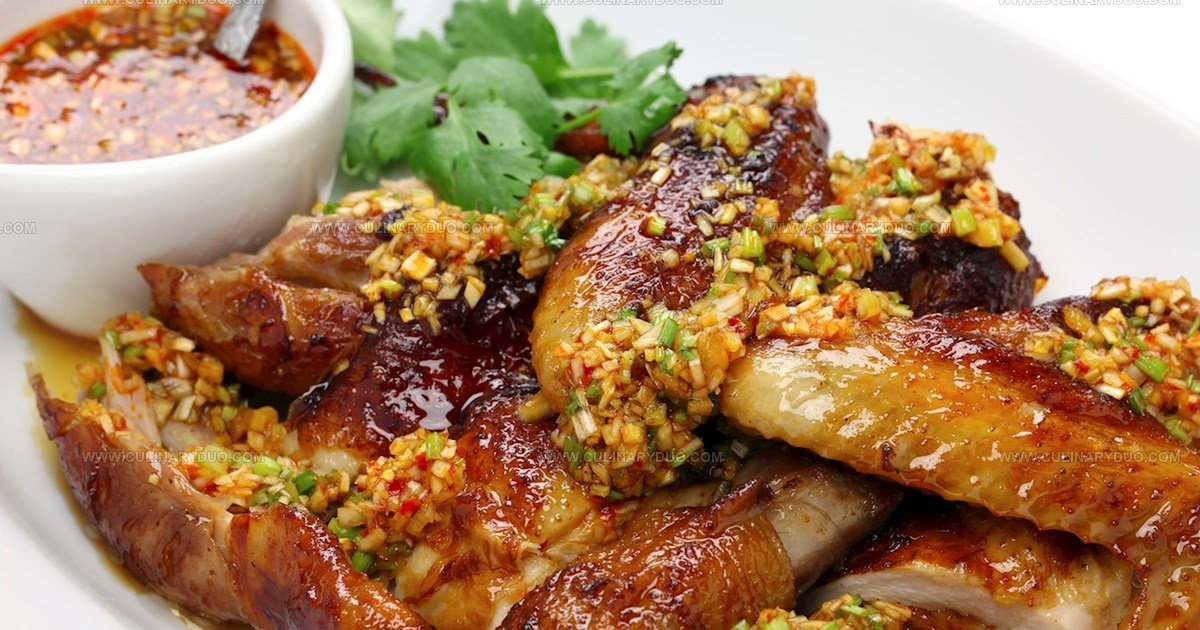
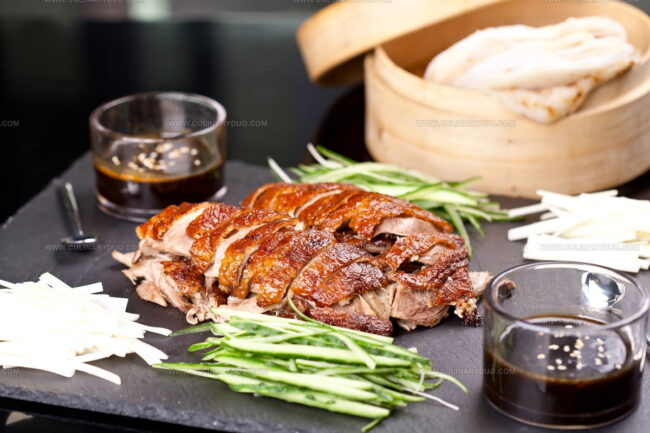
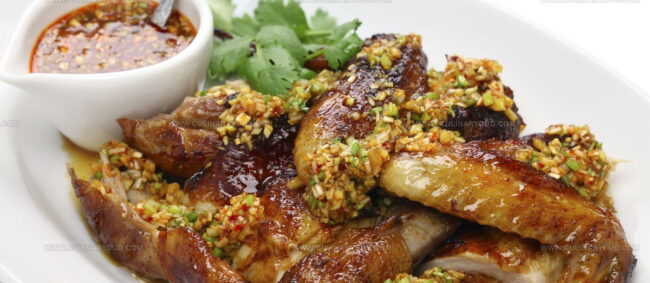
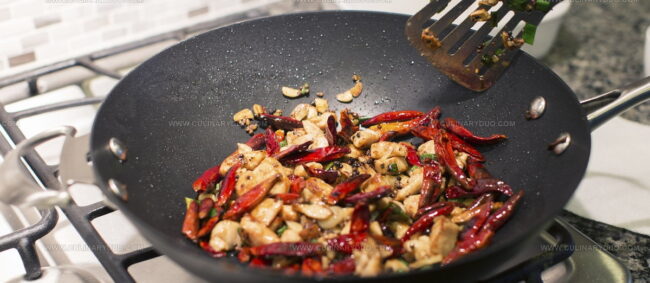
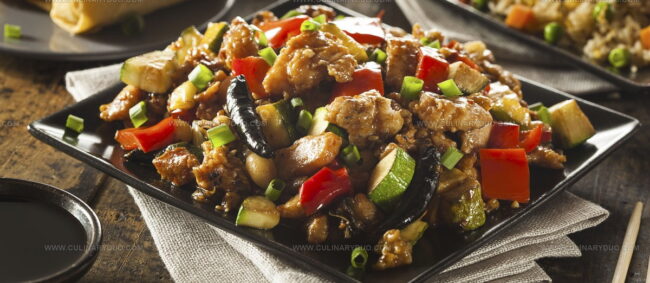
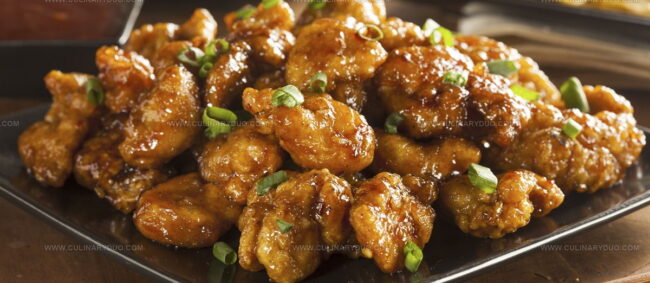
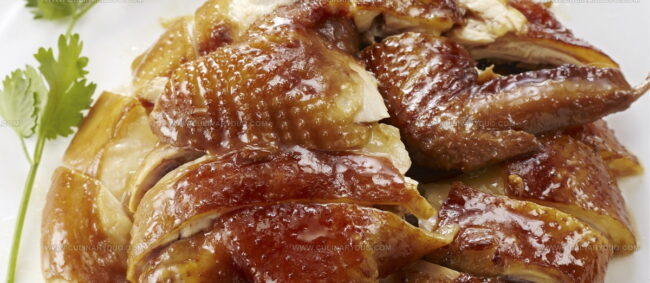
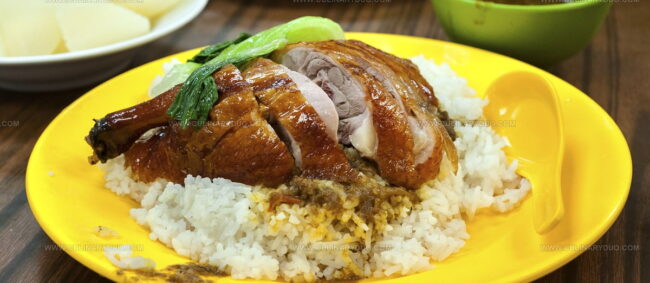
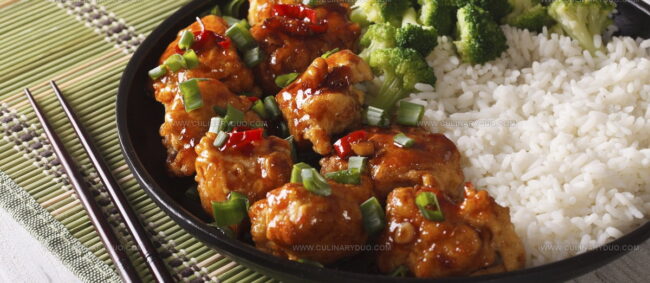
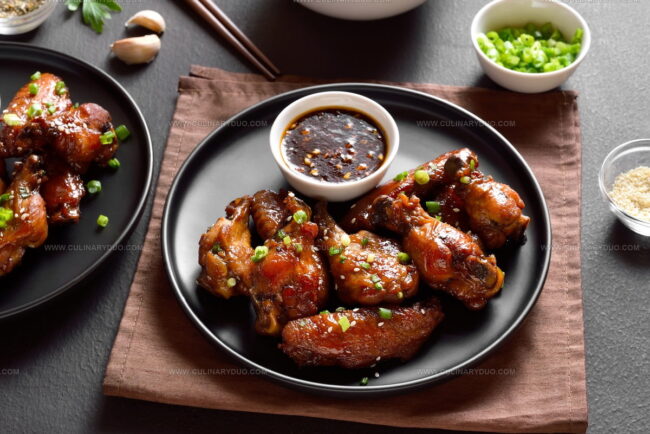
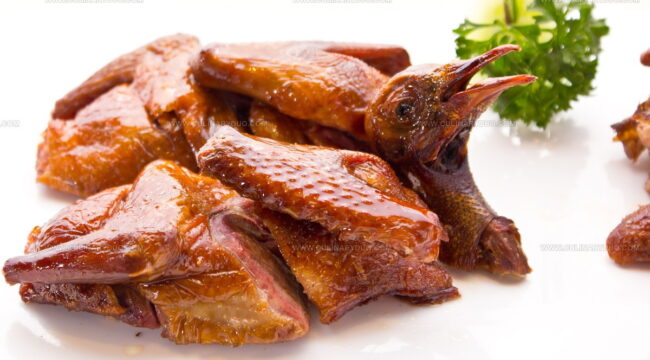
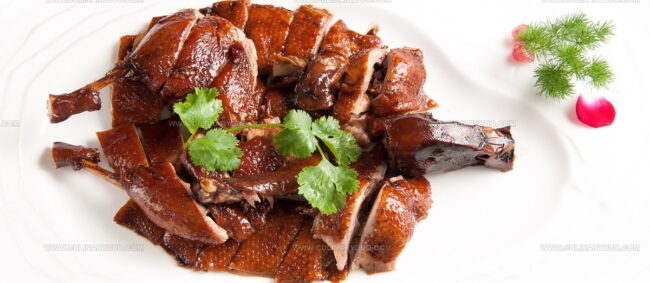
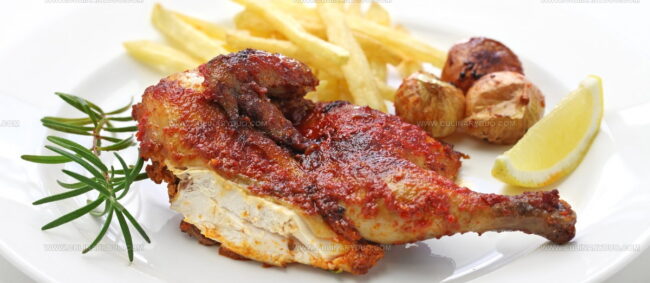
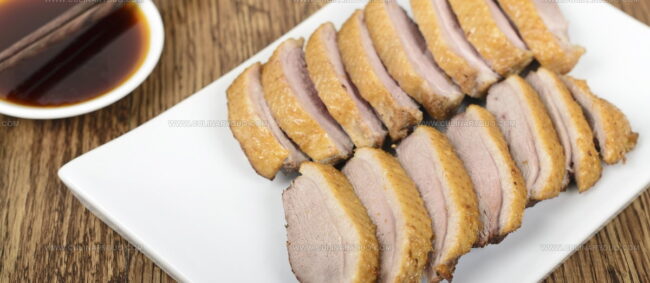
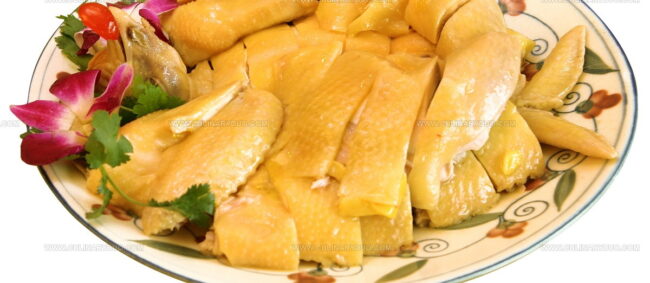
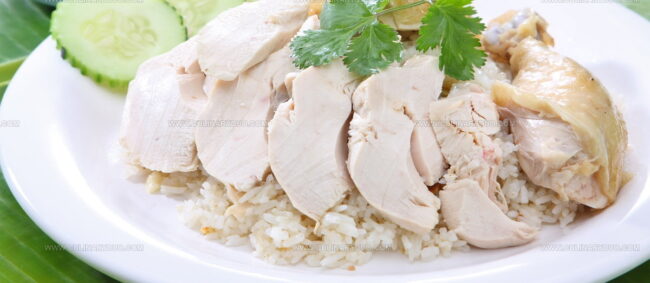
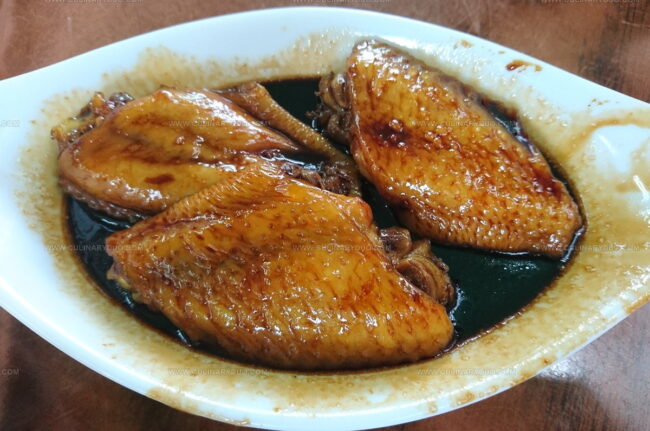
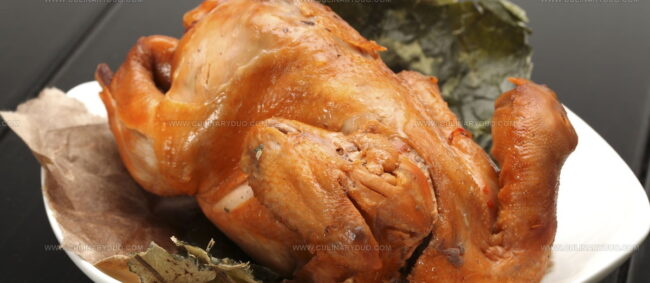
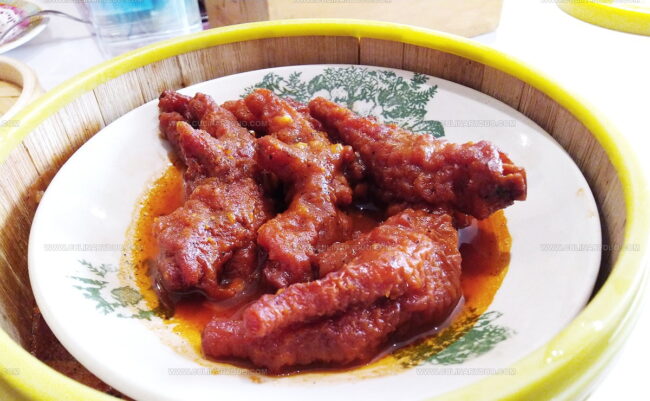
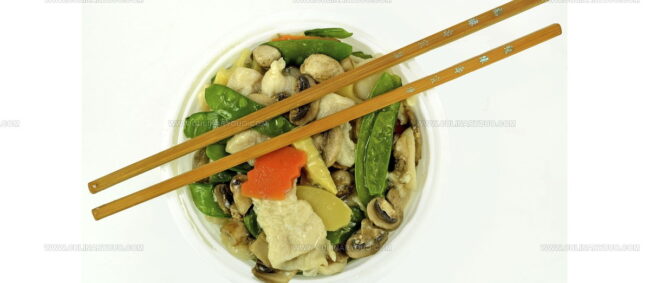
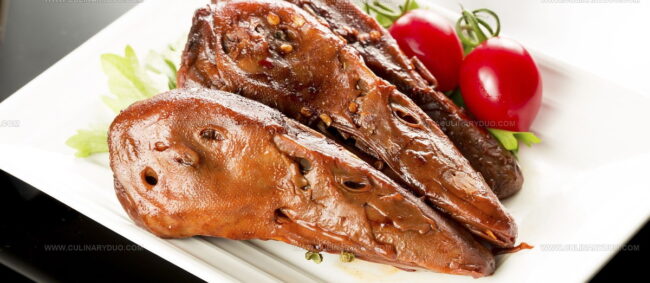
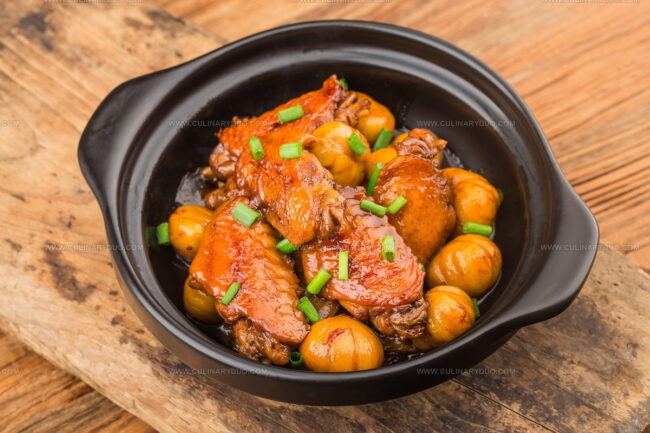
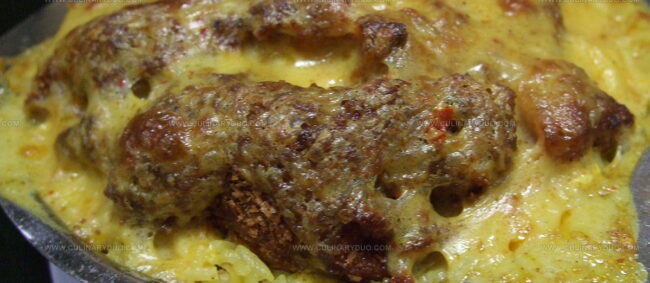
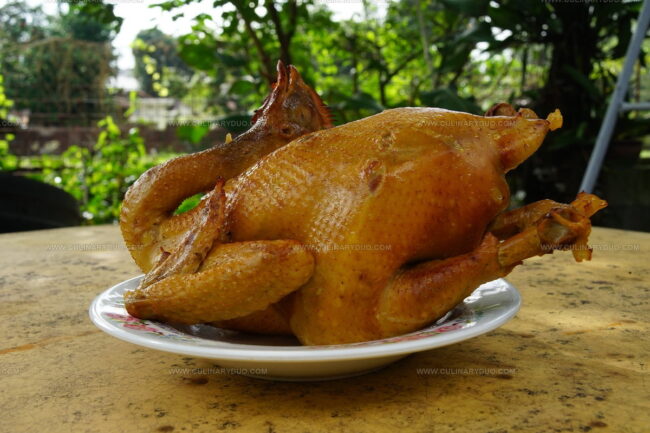
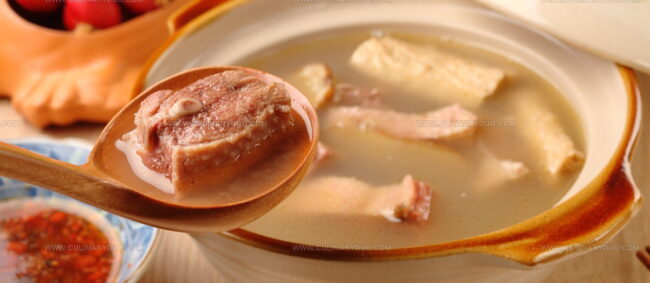
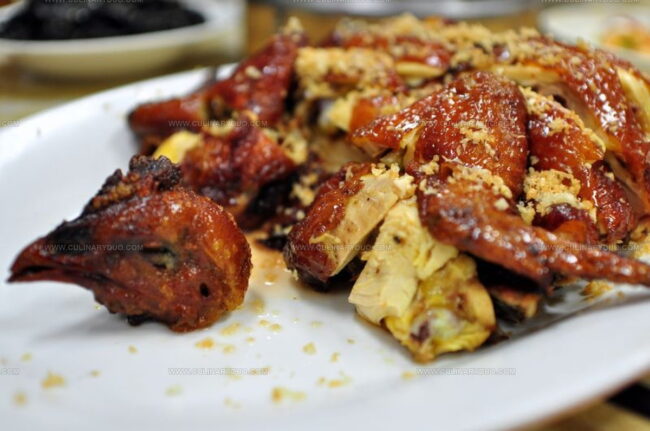
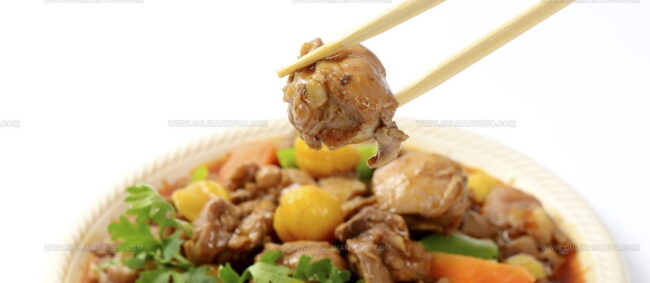
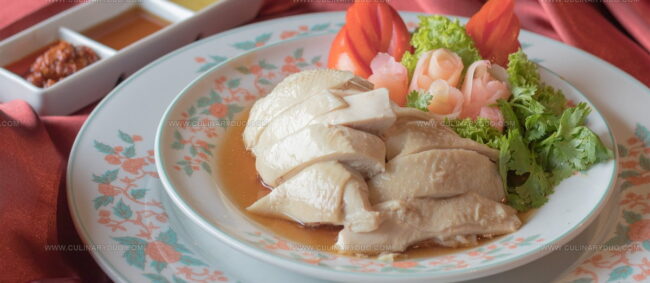
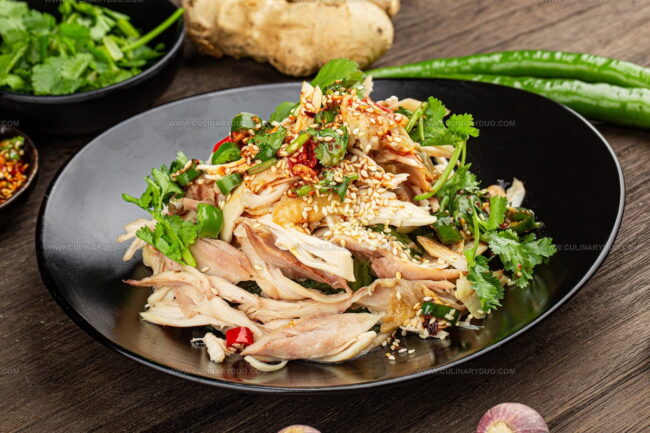
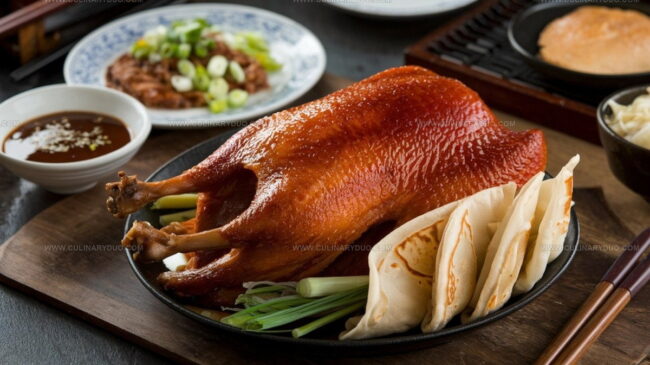
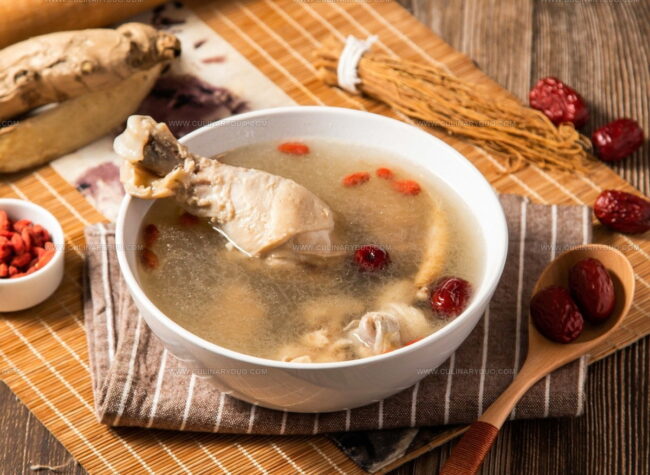
Michael Reyes
Founder & Lead Recipe Developer
Expertise
Education
Santa Fe Community College
Michael’s love for cooking runs deep, rooted in the bold, colorful flavors of his New Mexico upbringing.
After earning his Culinary Arts Certificate from Santa Fe Community College, he spent years sharpening his skills in kitchens that celebrated traditional Southwestern and Latin American dishes.
He believes cooking should feel approachable and fun, never complicated. When he’s not stirring up new recipe ideas, Michael’s out hiking scenic trails, chatting with farmers at local markets, or chasing the perfect sunset shot for inspiration.